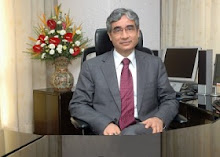Sri Sri Ravi Shankar
Ego is simply being unnatural, pretension, showing something that you are not.
It always needs someone else to appreciate and recognise you. Ego is something like: “I am intelligent, I like this, I don't like that, I am ugly, I am beautiful etc.“
The reason we have ego is because it is necessary for our growth in life. Ego should be there when there is challenge and creativity. In success, drop your ego but in failure, hold on to it. When you think you are failing, the ego says, come on what is this, nothing can touch me.
The “I“ or ego is a tiny atom. It causes heaviness and discomfort. When this atom, the ego, identifies with the body, it becomes miserable. But when it is associated with the spirit, the Self, it becomes Divine. It becomes shakti (energy).
In a huge atomic reactor, it is just one atom that has exploded. In the same way, in our whole body, there is just one atom of “I.“ And when this “I“ explodes, it becomes the light of the Self. In `Giridhari' (Krishna's name), Giri means mountain, which is ego. Ego is like a stone. It is not hollow and empty; it is solid.
And Giridhari lifted the whole mountain with his little finger. This means that even though the ego is like a mountain but with a little bit of love, you can lift it.
Everyone is made up of love.
Knowledge is an aid to develop this innermost state in you. A seed has a shell over it and when you soak it in water, it sprouts and the covering drops. In a similar manner, ego is a necessary unnaturalness that develops in you.
Knowledge uncovers the shell over you and makes you like a child again --natural, simple and innocent. If you find you have a big ego, don't try to destroy it because that effort will only increase it.
The antidote for ego is just being natural like a child. So, be in unconditional love and then ego automatically disappears.
Courtesy: Inner Voice / HT
REASON WE HAVE EGO IS BECAUSE IT'S NECESSARY FOR OUR GROWTH. EGO SHOULD BE THERE WHEN THERE IS CHALLENGE
It always needs someone else to appreciate and recognise you. Ego is something like: “I am intelligent, I like this, I don't like that, I am ugly, I am beautiful etc.“
The reason we have ego is because it is necessary for our growth in life. Ego should be there when there is challenge and creativity. In success, drop your ego but in failure, hold on to it. When you think you are failing, the ego says, come on what is this, nothing can touch me.
The “I“ or ego is a tiny atom. It causes heaviness and discomfort. When this atom, the ego, identifies with the body, it becomes miserable. But when it is associated with the spirit, the Self, it becomes Divine. It becomes shakti (energy).
In a huge atomic reactor, it is just one atom that has exploded. In the same way, in our whole body, there is just one atom of “I.“ And when this “I“ explodes, it becomes the light of the Self. In `Giridhari' (Krishna's name), Giri means mountain, which is ego. Ego is like a stone. It is not hollow and empty; it is solid.
And Giridhari lifted the whole mountain with his little finger. This means that even though the ego is like a mountain but with a little bit of love, you can lift it.
Everyone is made up of love.
Knowledge is an aid to develop this innermost state in you. A seed has a shell over it and when you soak it in water, it sprouts and the covering drops. In a similar manner, ego is a necessary unnaturalness that develops in you.
Knowledge uncovers the shell over you and makes you like a child again --natural, simple and innocent. If you find you have a big ego, don't try to destroy it because that effort will only increase it.
The antidote for ego is just being natural like a child. So, be in unconditional love and then ego automatically disappears.
Courtesy: Inner Voice / HT






